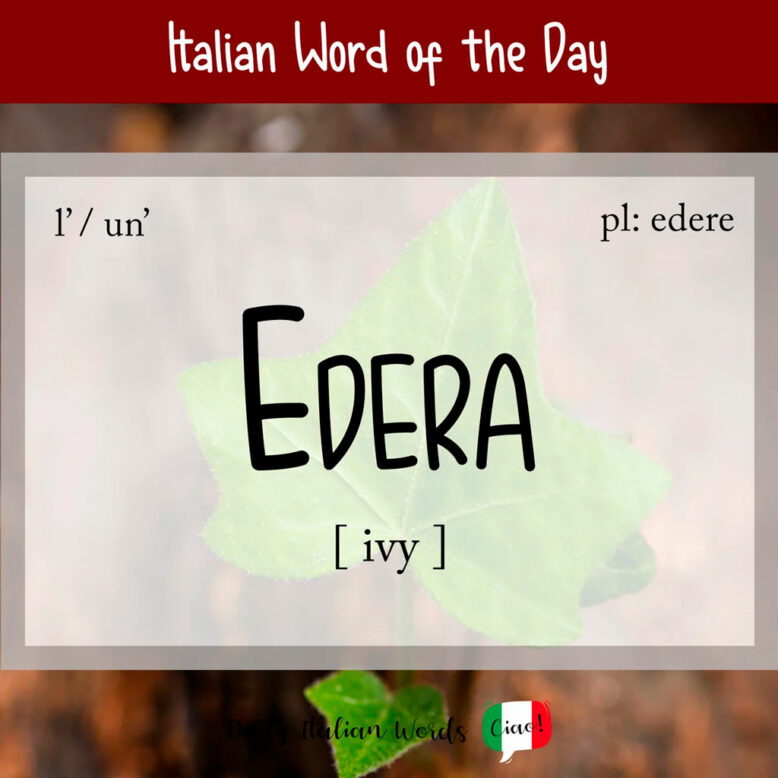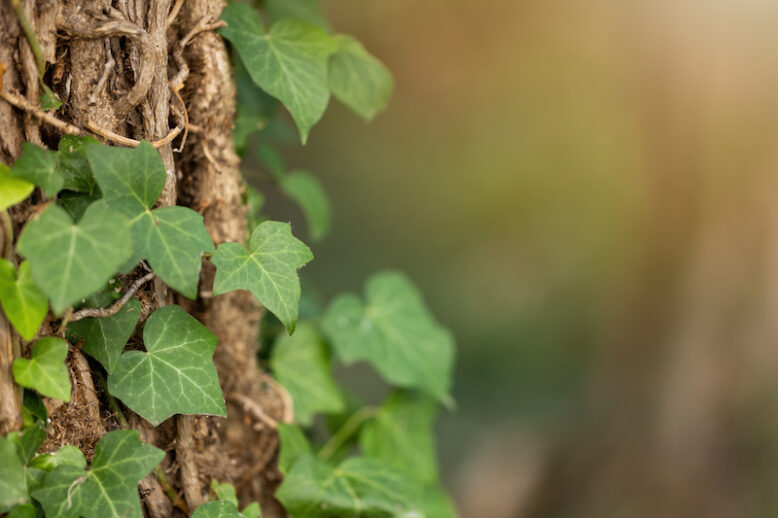Ivy, which is known as edera in Italian, is an evergreen climbing plant (pianta rampicante) that thrives on walls, rocks and trees. The name comes from the Latin hedera.

Edera is a feminine noun starting with a vowel, so it takes the following definite and indefinite articles:
- l’edera = the ivy
- le edere = the ivies
- un’edera = an ivy
- delle edere = (some) ivies
Edera velenosa is what Italians call poison ivy. Despite its common name, this plant actually isn’t a true ivy, but rather a member of the cashew (anacardo) and pistachio (pistacchio) family!
In Cina c’è un villaggio abbandonato totalmente ricoperto di edera.
In China there is an abandoned village completely covered with ivy.

If you say that something is avvinto come l’edera (clinging like ivy), the suggestion is that it is tenacious and long-lasting. Attaccarsi come l’edera (lit. to stick like ivy) is a variation that can also refer to a person who is difficult to get rid of, or a person who grows fond of somebody else.
Il partito dell’edera (lit. the Ivy Party) is the name of the Italian Republican Party, which has an ivy leaf as its symbol.
Heather Broster is a graduate with honours in linguistics from the University of Western Ontario. She is an aspiring polyglot, proficient in English and Italian, as well as Japanese, Welsh, and French to varying degrees of fluency. Originally from Toronto, Heather has resided in various countries, notably Italy for a period of six years. Her primary focus lies in the fields of language acquisition, education, and bilingual instruction.


